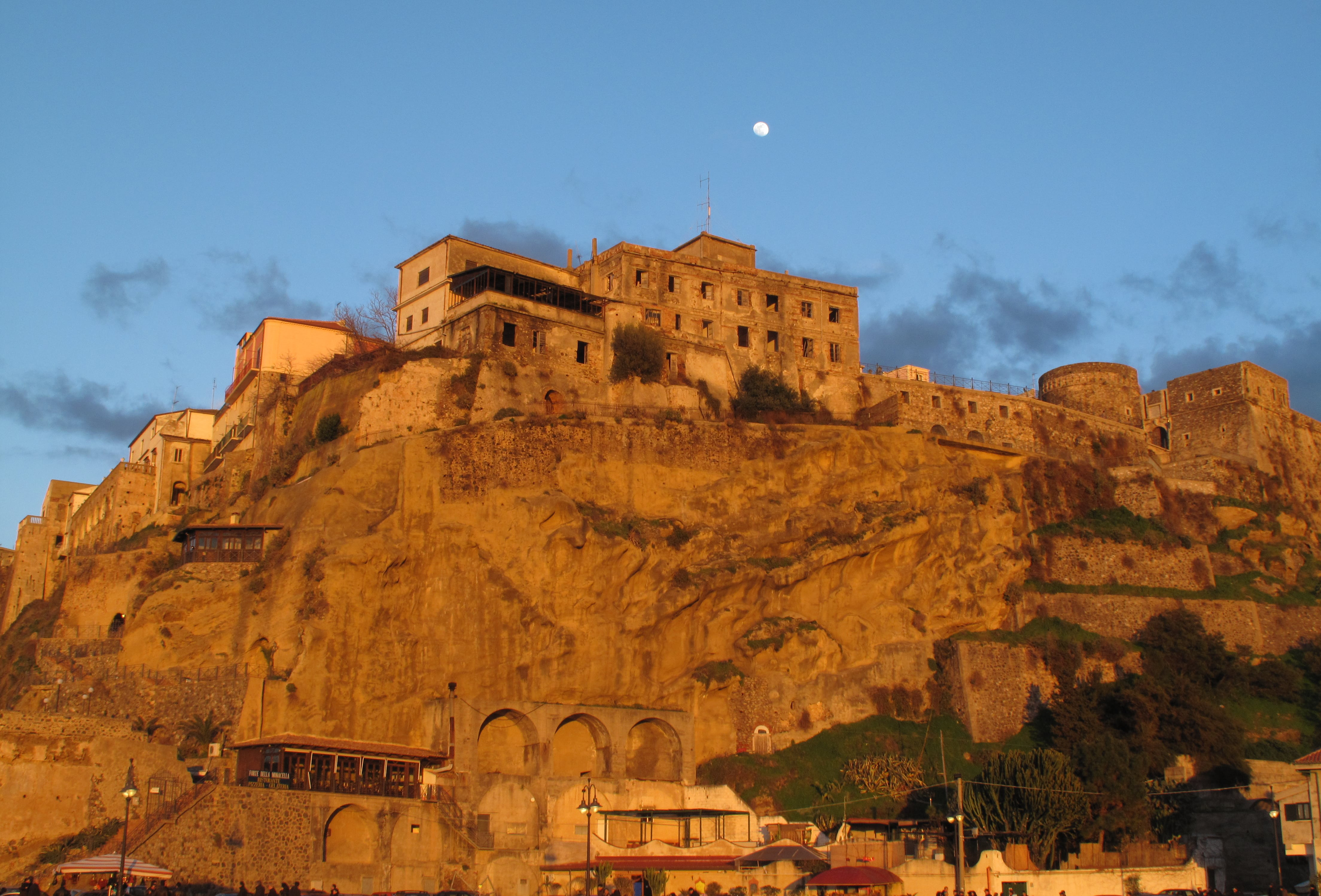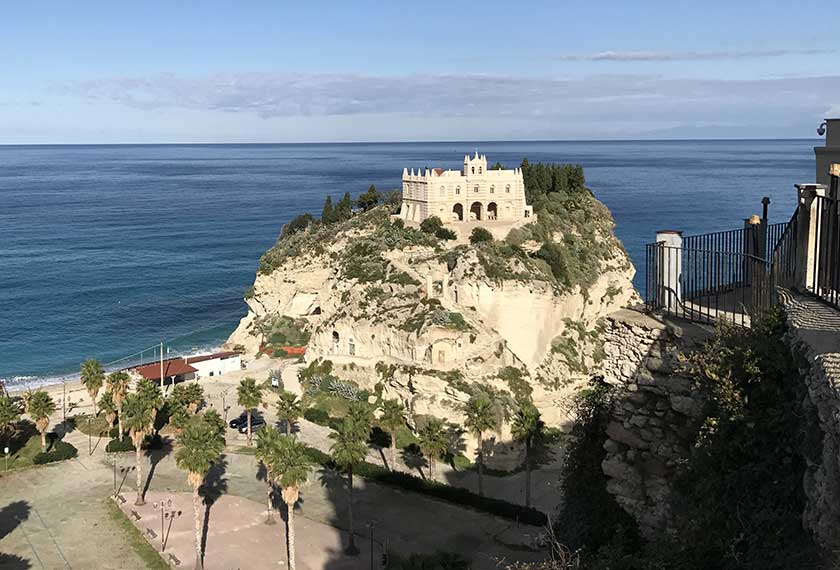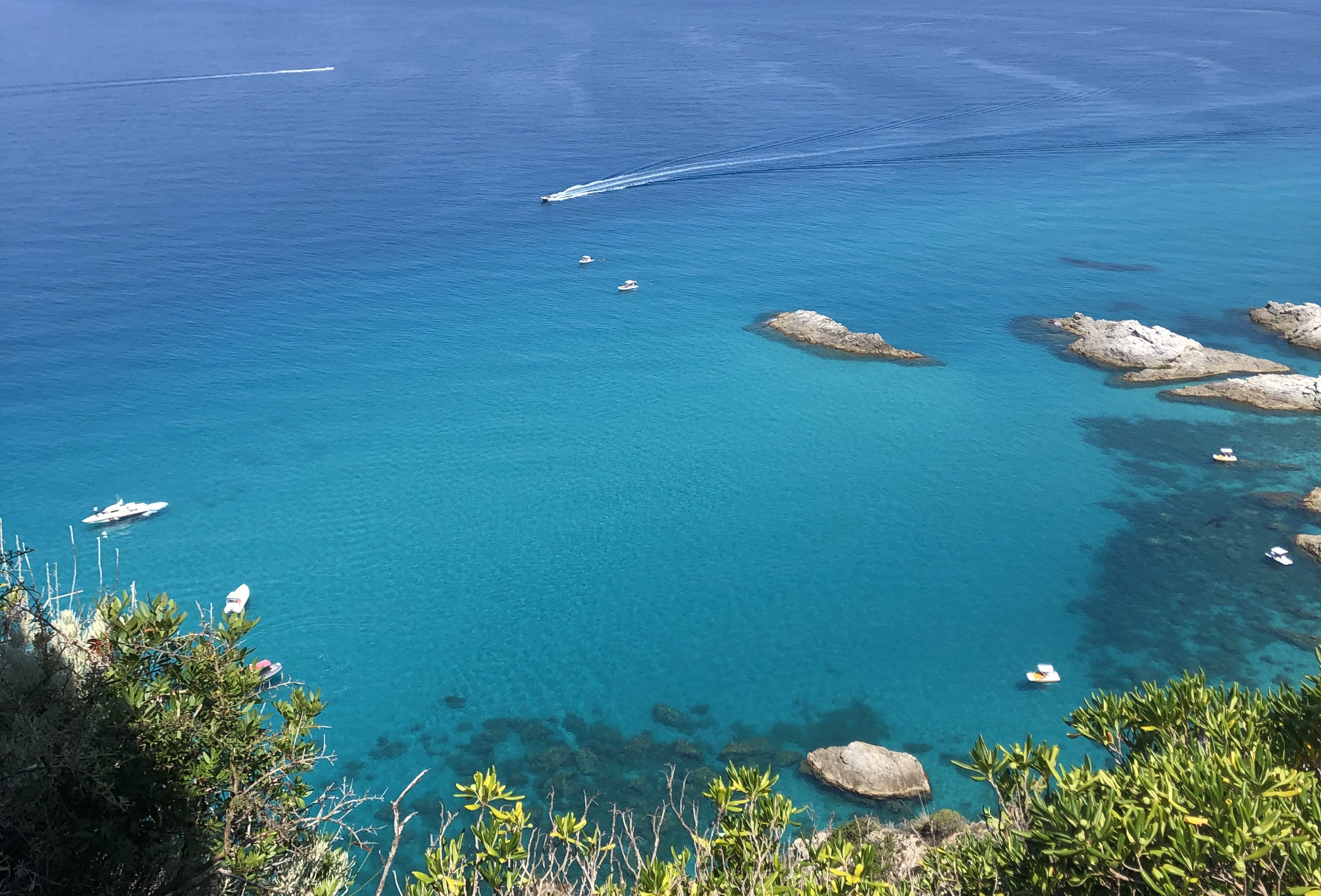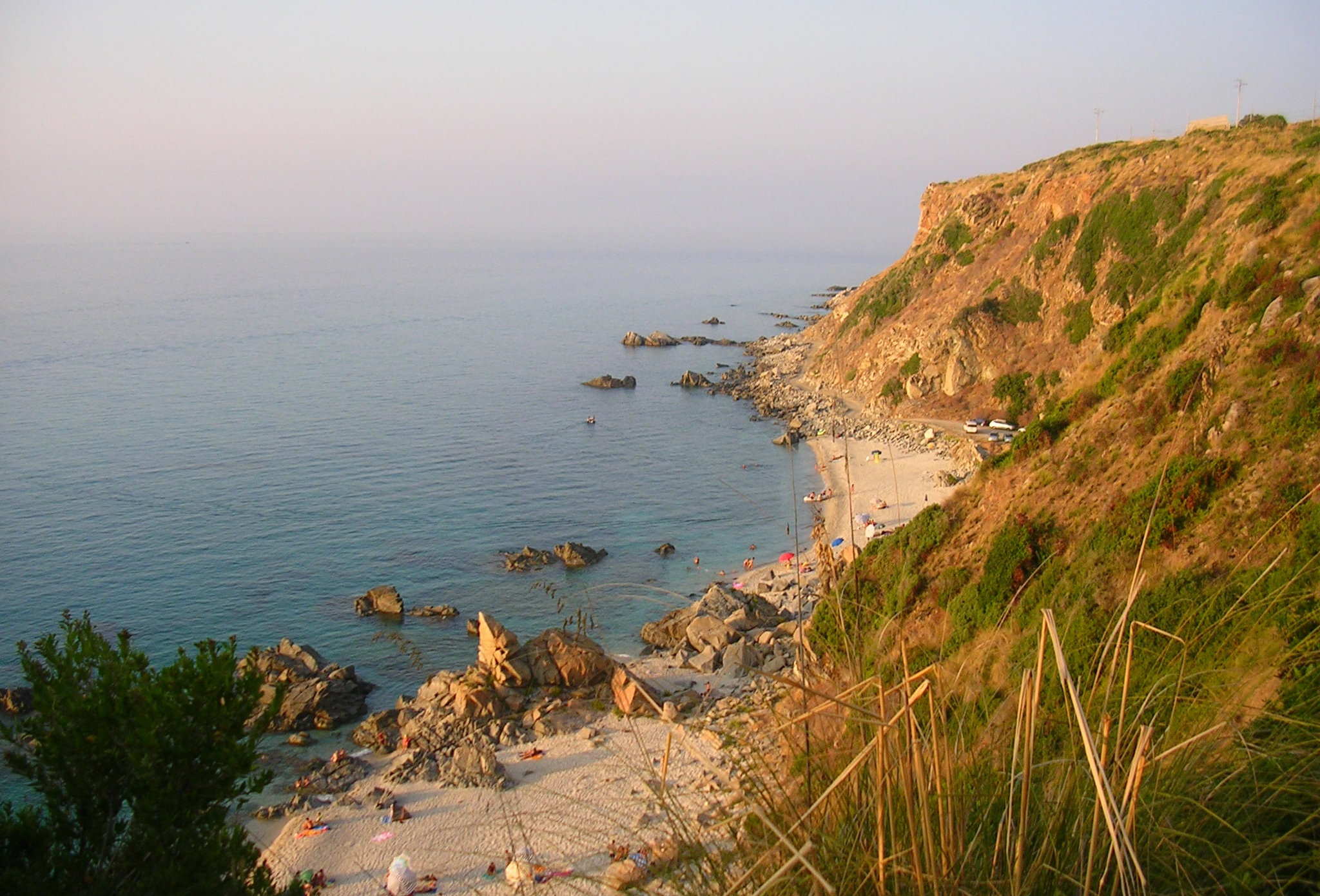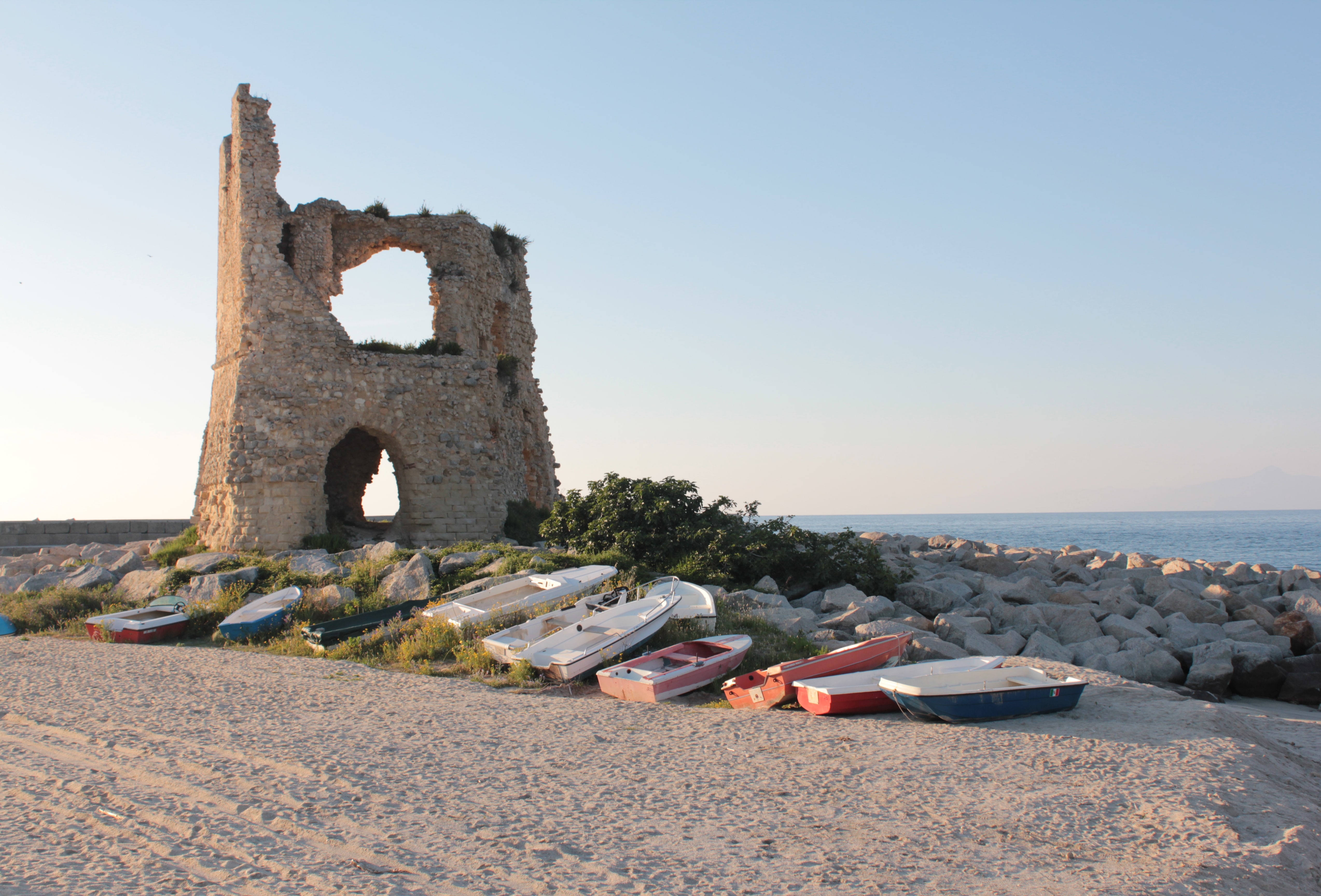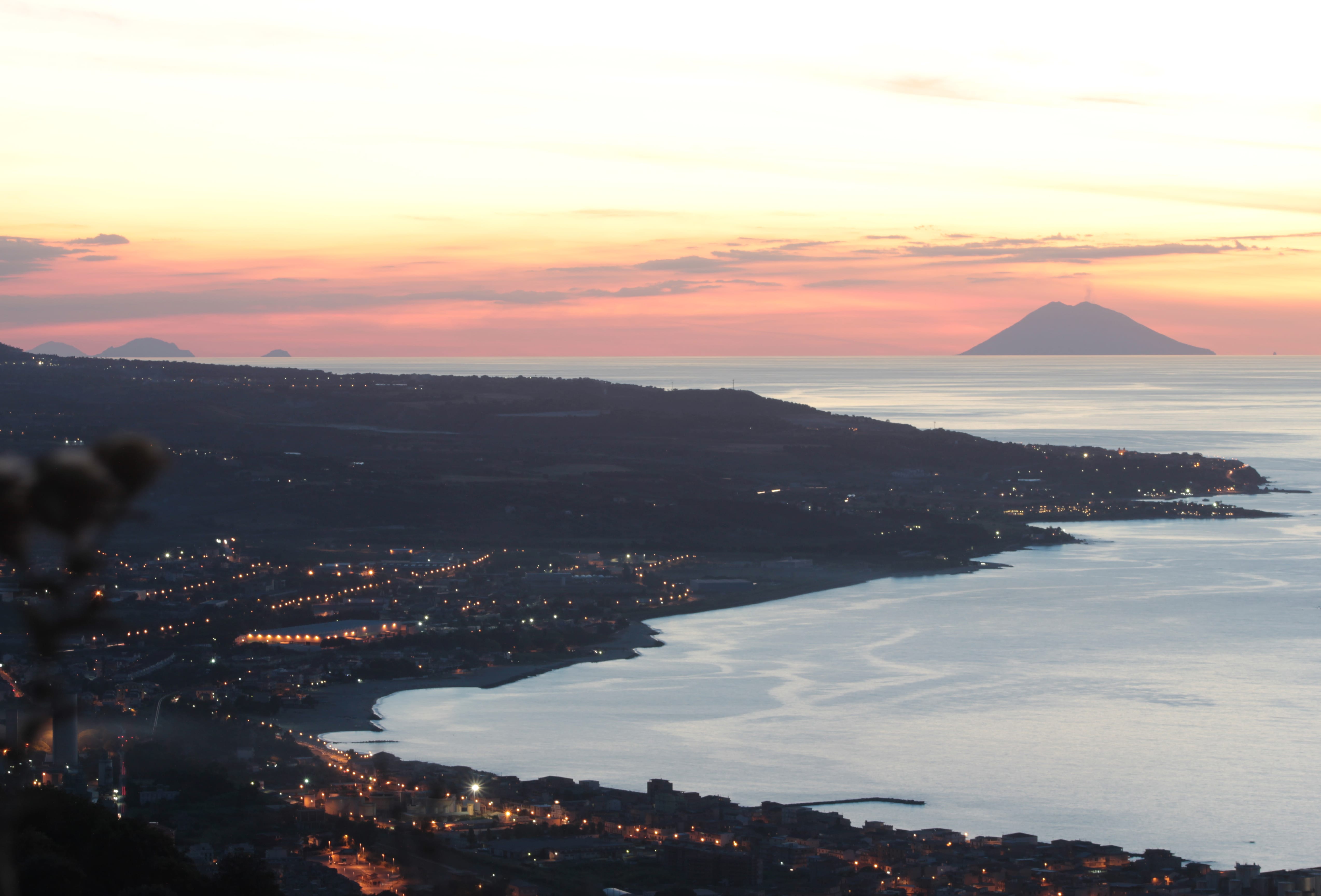Pizzo (also known as Pizzo Calabro, U Pìzzu in Calabrian [4]) is an Italian town of 9 059 inhabitants [2] in the province of Vibo Valentia in Calabria. The village is renowned for the production of the Pizzo truffle.
As with many other Calabrian places, in the past centuries an origin has been sought in ancient Magna Graecia, with some eponymous hero.
So today some repeat that Pizzo was founded by Nepeto at the time of ancient Greece. But there is no evidence of this, even if locally someone uses the term Napitia "napizia" for commercial reasons, and the word "napitini for the inhabitants. There is certain news of the existence of a fort and a village only in starting from 1300, and of the existence of a community of Basilian monks, while traces remain in the territory of an ancient fishing activity, especially tuna.
The name Pizzo (= bird's beak, protruding point) fits perfectly to the tufaceous promontory that juts out into the sea, rising from the mouth of the Angitola river, up to the Marina beach, where the small Aragonese fort, called today Murat Castle, for the tragic events of 13 October 1815.
The privileged position and the castle favored the growth of the fishing village, also for the successful tuna fishing activity. For centuries, tuna dominated the seas reaching thousands of beaches in the Gulf of Sant'Eufemia; here arose the famous tuna castles of Bivona and Pizzo. Right next to the Church of Piedigrotta, on the beach called Prangi, in the area called Centofontane, due to the still current existence of many sources of fresh water, the rais and his men placed, until the seventies, the trap that was held by cables that started from the rocks on the ground, under the current Church of San Francesco di Paola. In the rocks in the sea there are traces of this activity. The stone arch that held the cable collapsed, but you can see pools, stairs, excavations, tubs, sprinkled by sources of fresh water, now not very abundant, where tuna probably washed.
The Bourbons made some intervention for Pizzo, and there is trace of the 1854 trip of King Ferdinand II, who came to Calabria with the Neapolitan army in armed exercise, and with his son Francesco (whom he called Ciccillo). One night the King was stuck at the mouth of the Angitola river, and the Pizzitani offered him hospitality in stately homes, but the king wanted to accept the hospitality of the convent of San Francesco di Paola, to which he was very devoted. It is said that the convent was absolutely unprepared to receive the king and that they did not even have water. On the course there is a plaque commemorating the event. The castle testifies to the presence of the Aragonese in the 15th century.
In this very place, the Aragonese castle, Gioacchino Murat, king of Naples and brother-in-law of Napoleon Bonaparte, was held prisoner and later sentenced to death. He was shot on 13 October 1815, after a few days of imprisonment and a trial in the main hall of the castle and was then buried in the church of San Giorgio. Today the Aragonese castle of Pizzo is called Castello Murat. Inside the Castle there is the Murattian provincial museum.
(By Wikipedia)
https://www.palazzomarzano.it/index.php/en/pizzo#sigProId07e189e214
(Photo Pasquale Marcellini)



